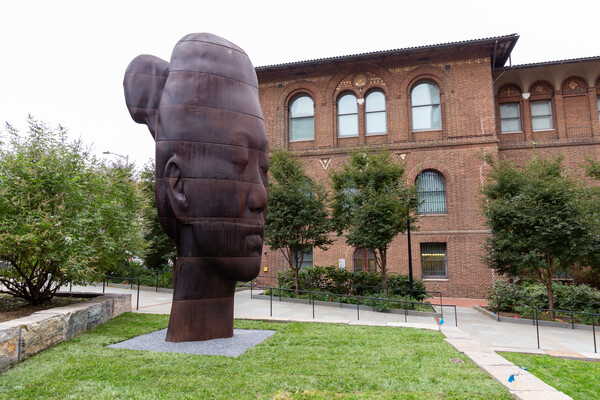
(From left) Doctoral student Hannah Yamagata, research assistant professor Kushol Gupta, and postdoctoral fellow Marshall Padilla holding 3D-printed models of nanoparticles.
(Image: Bella Ciervo)
Though France has long been hailed as one of the world’s leading fine wine producers, the iconic grape beverage originated elsewhere.
Archaeologists believe the first vintners worked 9,000 years ago, in present-day Turkey or the Zagros Mountains of Iran. The major French contributions to viniculture, as epitomized by the 12th century Cistercian monks, who literally tasted the soil of Burgundy and determined where Pinot Noir and Chardonnay grow best, comes much later.
Working with colleagues from France and the United States, anthropologist Patrick McGovern has found evidence that wine reached the southern coast of France via the Etruscans, in the 6th-5th century B.C.E.
“What we haven’t had is clear chemical evidence, combined with botanical and archaeological data, showing how wine was introduced into France and initiated a native industry,” says McGovern, scientific director of the Biomolecular Archaeology Laboratory for Cuisine, Fermented Beverages, and Health at the University of Pennsylvania Museum of Archaeology and Anthropology. “Ultimately it comes from the Middle East, going back thousands of years, coming through southern Italy.”
McGovern, who is an adjunct professor of anthropology, is the lead author on the paper detailing the discovery, published in the Proceedings of the National Academy of Sciences.
The team used biomolecular archaeology techniques to identify wine residue found in Etruscan amphoras in Lattara, France. The jars were good candidates for testing because they were whole and unwashed, and found in an undisturbed, sealed state.
Among their mixed bag of analytical tools, the team used liquid chromatography-Orbitrap mass spectrometry, the first time this technique has been used to analyze ancient wine and grape samples. Other state-of-the-art chemical techniques included infrared spectrometry, gas chromatography-mass spectrometry, solid phase microextraction, and ultrahigh-performance liquid chromatography tandem mass spectrometry.
The amphoras contained tartaric acid, or tartrate, which is the biomarker compound for Eurasian grape and wine in the Middle East and Mediterranean. McGovern and his colleagues also discovered compounds deriving from pine tree resin and herbal additives to the wine, including rosemary and possibly basil and thyme. The herbs are native to central Italy, where the wine was likely made.
The site also contains other wine production remnants, including an ancient limestone grape pressing platform, circa 425 B.C.E., and a mass of grape remains, including domesticated grape seeds—clear evidence of the debris from grape pressing or stomping.
Wine was adopted by different cultures because it fulfills many functions. Certain herbs make it medicinal, and the alcohol destroys bacteria, making it safer to drink than fresh water. Traders even employed marketing techniques to convince the rulers of foreign ports to drink their beverage, says McGovern.
“The traders made presents to the rulers of southern France, which paved the way for the introduction of native winemaking there. These included fancy wine sets for presenting and serving the beverage, made of precious metals, bronze, and glass,” he says.
Manasee Wagh

(From left) Doctoral student Hannah Yamagata, research assistant professor Kushol Gupta, and postdoctoral fellow Marshall Padilla holding 3D-printed models of nanoparticles.
(Image: Bella Ciervo)

Jin Liu, Penn’s newest economics faculty member, specializes in international trade.
nocred

nocred

nocred